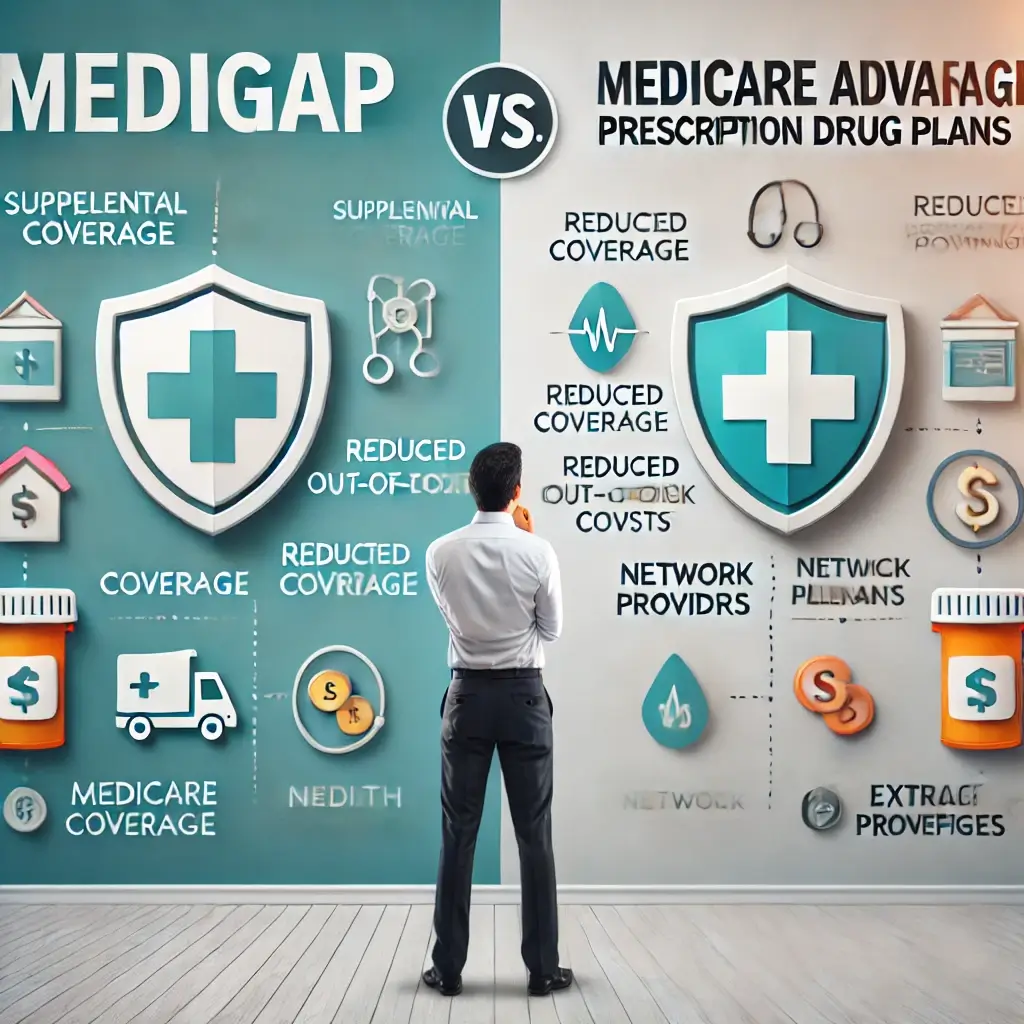Navigating Medicare options can be overwhelming, especially when it comes to understanding the differences between Medigap and Medicare Advantage Prescription Drug Plans. These two choices offer distinct ways to enhance your Medicare coverage, but they serve different needs. Let’s break down how they compare so you can make an informed decision.
What is Medigap?
Medigap, also known as Medicare Supplement Insurance, is designed to help cover out-of-pocket costs not covered by Original Medicare (Part A and Part B). These costs can include copayments, coinsurance, and deductibles. Medigap plans are standardized and offered by private insurance companies. Each plan offers different levels of coverage, but the benefits are the same across all insurers.
Key Features of Medigap:
- Covers Gaps in Original Medicare: Medigap helps pay for expenses not covered by Medicare Parts A and B, like hospital stays and doctor visits.
- Freedom of Choice: You can visit any doctor or healthcare provider that accepts Medicare, without needing referrals.
- No Prescription Coverage: Medigap does not include prescription drug coverage, so you’ll need a separate Medicare Part D plan for medications.
- Standardized Plans: Every Medigap plan offers the same benefits, regardless of which company provides the policy, making it easier to compare options.
What is a Medicare Advantage Prescription Drug (MAPD) Plan?
Medicare Advantage (Part C) is an all-in-one alternative to Original Medicare, combining Part A, Part B, and often Part D (prescription drug coverage) into a single plan. These plans are offered by private insurers and may include additional benefits not provided by Original Medicare, such as vision, dental, and wellness programs.
Key Features of Medicare Advantage Prescription Drug Plans:
- Comprehensive Coverage: Medicare Advantage plans often include Part D prescription drug coverage, so you don’t need a separate plan for medications.
- Network-Based Plans: Most Medicare Advantage plans have a network of healthcare providers, meaning you may need to use specific doctors and hospitals to get the best rates.
- Extra Benefits: Many MAPD plans offer additional perks, like dental, vision, and hearing coverage, which are not included in Original Medicare or Medigap.
- Managed Care: These plans often require referrals for specialists and pre-approval for certain procedures.
Comparing the Two Options
| Feature | Medigap | Medicare Advantage (MAPD) |
|---|---|---|
| Out-of-Pocket Costs | Covers deductibles, copays, and coinsurance. | Typically lower premiums, but may have higher copays. |
| Network Restrictions | No network limits; any provider that accepts Medicare. | Often limited to a network of providers. |
| Prescription Coverage | No, must buy a separate Part D plan. | Yes, usually included. |
| Additional Benefits | None beyond Original Medicare. | May include dental, vision, and wellness perks. |
| Referrals/Pre-Approvals | No referrals needed for specialists. | Referrals and pre-approvals may be required. |
Which One is Right for You?
The decision between Medigap and Medicare Advantage depends on your healthcare needs, budget, and personal preferences.
- Choose Medigap if: You want more flexibility in choosing healthcare providers, travel frequently, or want peace of mind with fewer out-of-pocket expenses. Keep in mind, you’ll need to purchase a separate Part D plan for prescription coverage.
- Choose Medicare Advantage if: You prefer an all-in-one plan that includes prescription drug coverage and additional benefits like dental and vision, and you don’t mind using a network of providers. Medicare Advantage may be more cost-effective in the short term but could result in higher out-of-pocket costs if you need frequent care.
Conclusion
Both Medigap and Medicare Advantage Prescription Drug Plans offer valuable ways to supplement your Medicare coverage, but they cater to different needs. Medigap provides broader access to healthcare providers and reduces out-of-pocket costs, while Medicare Advantage offers an all-in-one package with additional perks. Consider your healthcare needs, lifestyle, and budget when making your choice.
Understanding the differences between these options can help you select the plan that best suits your health and financial situation as you navigate your Medicare journey.


